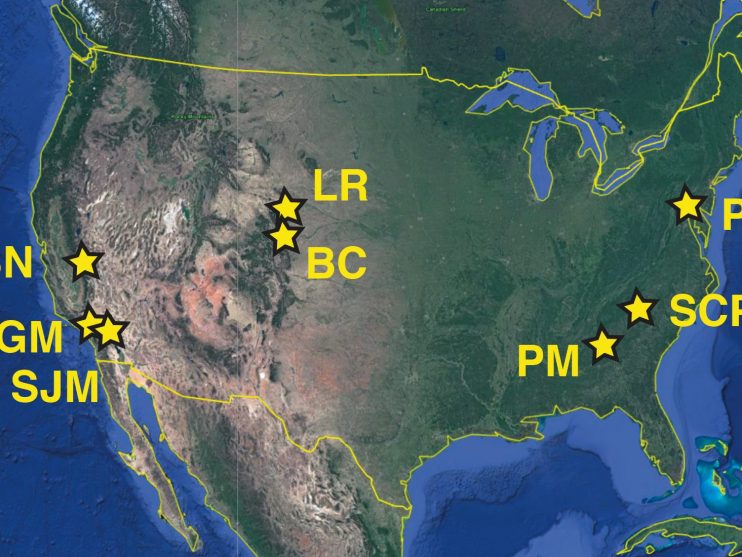THE BEDROCK CRITICAL ZONE NETWORK
Understanding the feedbacks connecting bedrock geology to CZ structure and function. "What happens at depth doesn't stay at depth."
Understanding the feedbacks connecting bedrock geology to CZ structure and function. "What happens at depth doesn't stay at depth."
WHERE WE'RE WORKING
Our eight sites cover a wide range of climatic and bedrock conditions, in nearly all possible combinations, and therefore span a wide range in predicted subsurface weathering patterns. For example, there are sites with differing bedrock composition but similar climate, topography, and bedrock fracture density, and there are humid and semi-arid sites with similar subsurface stress fields, leading to differing predictions about the depth and degree of weathering and how it varies across hillslopes. Thus our study design allows us to isolate and explore the effects of individual lithologic and climatic controls on CZ processes.
